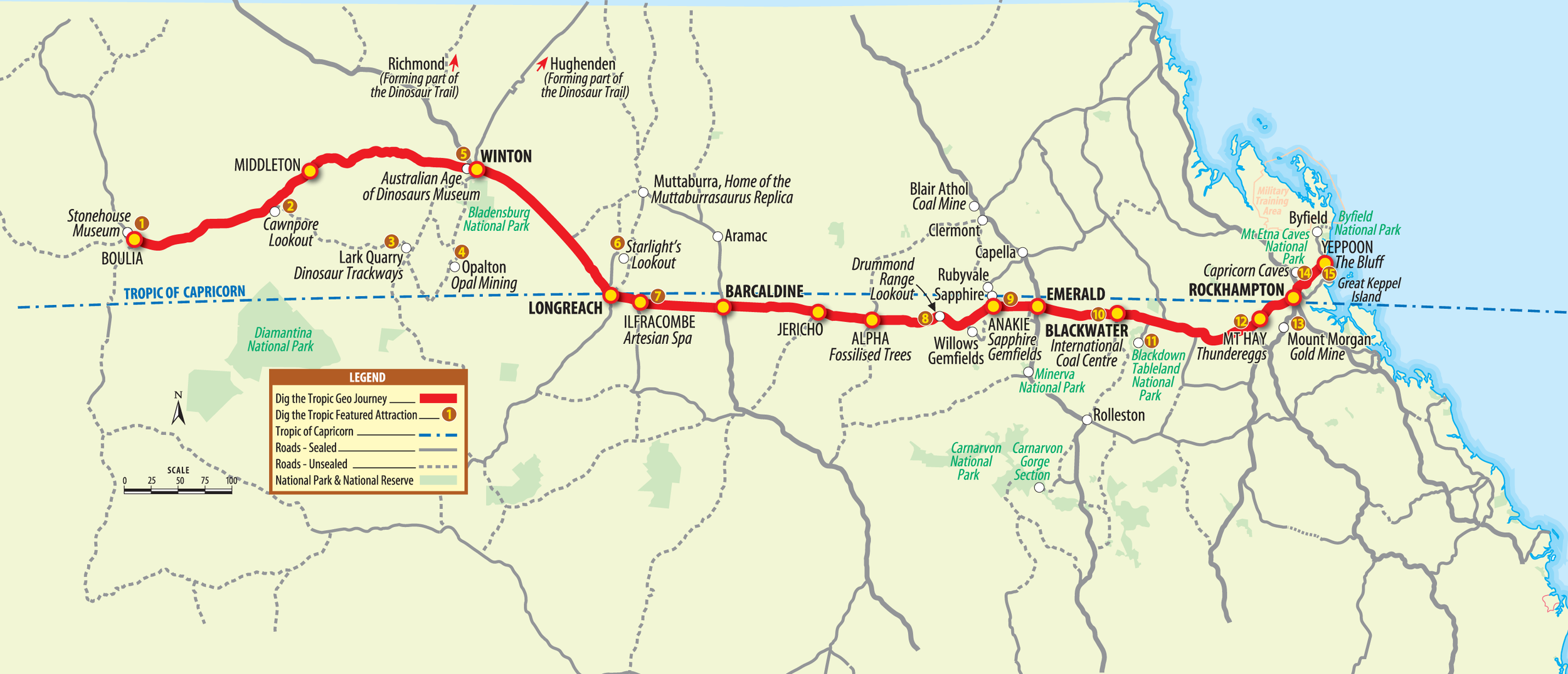
Mount Hay
via Rockhampton
S 23’26.628, E 150’26.315
Nestled at the base of Mt Hay, on what was once a rumbling volcano and the thudereggs you admire today are the fruits of its violent eruptions – “Volcanic Birthstones”. Ordinary on the outside, these geo treasures are stunning underneath and their layers tell the story of an incredible geo journey.
What are Thundereggs?
Hot Beginnings… Mt Hay’s thundereggs formed in silica-rich volcanic rocks resulting from ancient lava flow called Rhyolite 120 million years ago.
Trapped in Time… The flowing Rhyolite trapped small particles and tiny gas bubbles, leading to the development of ‘volcanic birthstones’.
Formation… Thundereggs occurred when two forms of crystallization took place creating spherulites and spheruloids. Spherulites are a radical growth created when minerals crystallize around a nucleus. Spheruloids are a hollow form created when minerals crystallize around a steam bubble.
Stars in the Stone… As the lava cooled the star shaped cavity often seen in thundereggs (spheruloids) developed.
Lasting Layers… The cooling caused minute cracks to occur, allowing silica-rich solutions to seep into the cavities. This filled them with minerals such as quartz, agate, chalcedony, quartz crystals, amethyst, jasper and opalite.
Revealed…
Due to weathering over the past 120 million years has exposed these volcanic wonders.
How Can I Experience Mt Hay?
Fossick for ‘Volcanic Birthstones’
Try your luck and take home your geo treasure! Tools and assistance provided. A truly fascinating experience.
Take a Guided Tour
Explore the thunder egg site and check out the gemstone cutting and pewter casting factories.
Camp with Thundereggs
Camp amidst this intriguing landscape, surrounded by the secrets of the ages.
For more information
Contact Mt Hay Gem Tourist Park for more information about tours and fossicking (Phone: 07 4934 7183).

